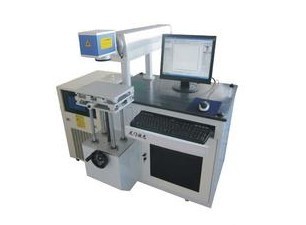As a well-developed laser source, high-power semiconductor laser systems are widely used in material processing and solid-state laser pumping. Although high-power semiconductors have many advantages such as high conversion efficiency, high power, high reliability, long life, small size, and low cost, relatively poor spectral brightness is a disadvantage that cannot be ignored. The typical spectral bandwidth of a semiconductor laser bar is about 3 to 6 nm, and the peak wavelength is affected by the operating current and operating temperature.
Typically, erbium-doped solid crystals are pumped over their relatively wide 808 nm absorption band, and standard semiconductor laser systems can easily meet the spectral requirements of 808 nm pumping. However, in the past few years, as the operating current and power of the semiconductor laser bar strips have increased, a larger wavelength shift has occurred during the rise from the threshold current to the operating current. In order to ensure a stable and efficient pumping over the entire working range, it is necessary to control the spectrum of the pumped semiconductor laser so that its spectral bandwidth always matches the absorption bandwidth of the active laser medium.
On the other hand, the rapid development of fiber lasers has also increased the demand for pump sources of other wavelengths. For example, a standard erbium-doped fiber laser with a pump wavelength of around 1080 nm requires fiber-coupled semiconductor laser systems of 915 nm, 940 nm, and 980 nm, especially for the 980 nm pump region, because the erbium-doped material has a higher pH in the pump region. The absorption coefficient and the narrow absorption bandwidth.
Further enhancement of the brightness of the semiconductor laser system is achieved by polarization coupling and wavelength multiplexing. Polarization coupling can only increase brightness by a factor of two, while wavelength multiplexing techniques are limited by the number n of available wavelengths. In fact, wavelength multiplexing for power spreading is at the expense of spectral brightness.
Wavelength multiplexing of standard semiconductor laser sources, as well as non-dielectric film based wavelength couplers, requires a spectral width of approximately 30 nm. By using a semiconductor laser source having a stable narrow-band emission spectrum and a volume holographic grating as a combination unit, the spectral distance can be significantly reduced to 3 nm. As a result, for a given spectral range, the number of semiconductor laser bar strips that can be multiplexed is increased, thereby increasing the brightness.
A larger advantage of a spectrally stable semiconductor laser module is its reduced sensitivity to operating temperature and operating current, making the cooling system easier. In addition, the specification requirements for the chip material are also reduced, which improves the utilization of the wafer in production; and also eliminates the wavelength variation ("red shift") caused by the increase in the operating time of the semiconductor laser. However, it should be pointed out that the acquisition of all these advantages depends on the locking range of the volume holographic grating.
